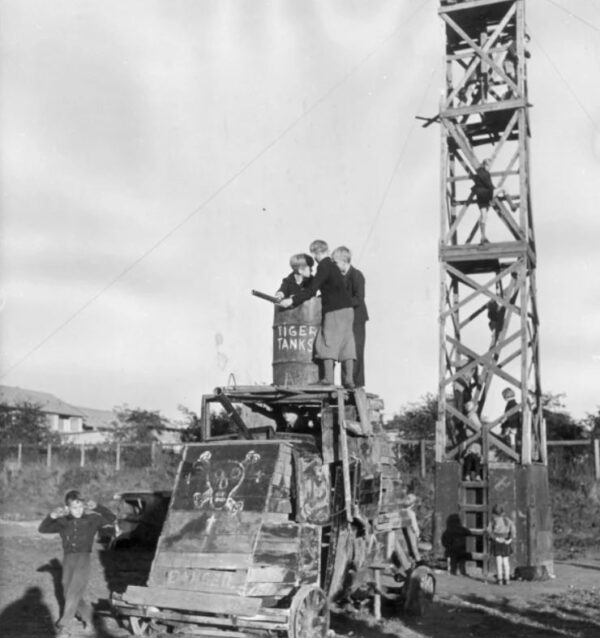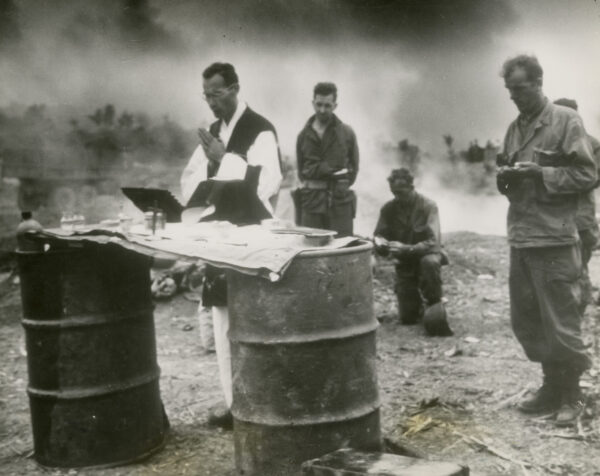Middle schools and high schools are built to be bomb proof.
Those who were once polite 5th graders become teenagers and often become disenchanted with the world, their parents and their teachers. At a certain age, youth discover the adults in their lives aren’t gods after all. Youth see right through us — they see the unfairness and the hypocrisy.
Still inexperienced dealing with greater problems and deeper emotions, sometimes teens can slip into the feeling they just don’t care anymore. When this happens, they can break things, and they can hurt people.
This became apparent to me as a teenager myself while attending Pleasant Grove High School. One time, as I was walking out of the bathroom, another guy hocked a loogie on the tile wall — right over my head. “Oh, sorry,” he said, apparently just noticing me for the first time.
In another bathroom there, I reached for the toilet paper to find that — with the whole roll still on its spool, it had already been used …
So yellow!
It’s just a teenage boy thing, I was sure. Around the same time I had also learned that unlike grotesque young men, girls “poop skittles and fart rainbows.” However this belief was dashed years later when a high school principal informed me that the girls bathroom was in even worse shape than the boys’!
My teen years were overall a good experience. Yet, I spent the whole of 8th grade and part of 9th grade feeling a strange, detached feeling, like I was in a fog. And as a senior with adulthood looming on the horizon, I fell into a depressive state that lasted through graduation. I still had fun and enjoyed time with friends that year — but underneath the show, something was definitely wrong.
A Rite of Passage
Included in this issue of The Byway are three essays written by students touching on mental health issues. As I read Jeily’s piece discussing a number of things that worry us today, I realize that not much has changed since when I was in school. The issues we worry about now are a little different than before, but the worry is the same.
With new challenges these days, I wonder if our youth feel that stress, anxiety and depression are greater now than they were in past generations. Is it harder now?
We must look to our parents, grandparents, and the pioneers to know. When we learn of the challenges they faced and how they overcame them, we have a greater perspective of our challenges today. We learn we can succeed too.
Every Generation Experiences Anxiety and Depression
That is why we learn history, and that is why many of our youth still reenact pioneer handcart treks. Yes, the early pioneers did it. And you are made of the same metal.
Even in the last 100 years, our parents have faced challenges with great strength.
Boyd K. Packer, born in 1924, said that when he graduated from high school, “virtually our whole senior class in a matter of weeks was on its way to the war zone.” Talk about stress! He himself enlisted with the Air Force in 1943 and was sent to Ie Shima, just north of Okinawa, Japan.
Packer told how he struggled with doubt and uncertainty — however, he did not mention his worry of war: his own personal struggle was to find his faith. This just goes to show that even in times of great upheaval, our worries can be truly unique, personal ones.
Every generation has had to come of age. This was never easy before, and it isn’t easy now. Depression and anxiety do not come to all, but stress and challenges do. This is a universal rite of passage into adulthood. In other words, you are not alone!
Emdrup
More kids than ever before report they have experienced anxiety and depression, and this is probably not just from a measurement change, or an increase in awareness of these conditions. I wonder if today’s youth really are just worse at coping with stress.
The most important purpose of parents is to prepare their children for the real world. Parents’ second purpose is to protect them. Of course, in the earlier years, protection took center stage. But the most recent generation of parents, dubbed the “helicopter parents,” have come under harsh criticism for protecting their kids in lieu of preparing them.
The risk here is that some parents are rendering their advanced teenagers as soft as oversized squishmallows. Parental protection doesn’t last forever, however, and their kids will have to face the real world. For the unprepared, the learning curve could be overwhelmingly steep.
The protection mentality is best embodied in the sterile, plastic playgrounds of modern-day America. Permanently affixed to the ground, they all have a five-foot plastic slide, a bridge, and some climbing structure, no more than five feet high. And lots of metal railing.
Playgrounds weren’t always like this.
‘Adventure Playgrounds’
Lady Allen of Hurtwood (born 1897 in Kent, England) was a landscape architect whose life work was fundamentally changed during a visit to Copenhagen in 1943. Previously, she had taken interest in how people live in spaces, and especially, how children used (or didn’t use) the plain, adult-designed playgrounds of the day.
In Copenhagen, Lady Allen saw Emdrup Skrammellegepladsen — the very first of what she came to call “adventure playgrounds.”
It was a junkyard.
Filled with loose building materials and debris of war-torn Denmark, children found real play in risk taking, creation, and destruction.
“I was completely swept off my feet by my first visit to Emdrup playground,” Lady Allen said. “There was a wealth of waste material on it and no man-made fixtures. The children could dig, build houses, experiment with sand, water or fire and play games of adventure and make believe.”
John Bertelsen, the play leader and Director at Emdrup, spoke of his experience facilitating in that playground, where nothing was permanent. One of his final acts as Director was to help demolish a 65-foot-high wooden tower built by the children. Think of that — we would never let our kids build such a tall tower!

Meanwhile in America
Since Emdrup, hundreds of adventure playgrounds have been built across Europe and the UK, with only a handful in the U.S. (in the U.S., parents must sign a waiver before children can enter the playgrounds).
“In the intervening decades, academics, psychologists and educators have increasingly recognized the central importance of risky play for development,” wrote Ben Highmore of University of Sussex. “There is broad consensus that children discouraged from physically adventurous and risky play risk being deprived of the social and risk management skills, resilience and self-confidence that this kind of activity fosters.”
As did past generations of kids, kids in other nations are learning the social and risk management skills they need to prepare them for adulthood. Meanwhile in America, play is restricted to plastic playgrounds and pre-scheduled, supervised “playdates” where neither the muscles of personal management nor creation are fully exercised.
Maybe this has something to do with the lack of kids’ preparedness for the real world.
Sorting Stressors
But the real world is already here. Unlike previous generations, teens are already seeing the troubles of real life through the negative lenses of news media and social media.
In the news, fear sells, so it’s no wonder that our youth today would experience anxiety over racial injustice or climate change. Stack on top of that a new problem of forcing kids to question their own identity or gender. Anxiety is rooted in uncertainty, and there is no better purveyor of uncertainty than news media and social media.
All the negativity can be overwhelming. But of all of the negative things we hear, what actually matters?
Biologically, the purpose of fear is to keep us from bodily danger. But it is terrible at helping us assess other kinds of abstract risks, like climate change. A study by The Lancet showed that 59% of children and young adults are very or extremely worried about climate change, so it’s worth a mention here.

If you believe climate change is a real threat, is anxiety over it justified? No, say some experts. Health and Wellness Services of the University of Colorado discusses coping with anxiety by simply focusing on what you can control. They also suggest taking a break from climate news!
The same is true for every other stressor. Inventory the things that are bothering you. Then, decide which things matter, and act on them.
Finding Meaning in Suffering
Stress, anxiety, and heartbreak are natural steps in our personal growth. Every hero is made of this metal, and you will be too. In the end, the hero is made not in the challenges she faces, but in how she overcame them.
In the 1990s, psychologists Richard Tedeschi and Lawrence Calhoun began exploring the newly-discovered concept of “post-traumatic growth.” Post-traumatic growth is more than just resilience, it is advancement, they said.
Viktor Frankl, a Holocaust survivor, said in his book Man’s Search for Meaning that suffering can either make or break a person. He said that a person “may remain brave, dignified and unselfish. Or in the bitter fight for self-preservation he may forget his human dignity and become no more than an animal.” Frankl said that the choice between the two outcomes is not a result of the suffering, but of “an inner decision.”
In life’s toughest years, we are all faced with the same decision — whether our suffering will make us, or break us. There is meaning in the suffering. If you feel you are ready to give up, hang in there. Ask for help, and let your friends and family walk with you, one day at a time.
Life’s journey takes us through wastelands and dark tunnels. Dark times come, but they also go. With each challenge, we grow a little more. When you are one day in the sunshine again, you will see more clearly the meaning of your challenges. And you will also find a new empathy that will make you the hero someone else needs in their darkest nights.
– by AJ Martel
Feature image caption: A Chaplain conducts a battlefield burial on Ie Shima Island (now called Iejima) in 1945. The island was secured as part of the Battle of Iwo Jima, where 6,800 Americans and around 18,000 Japanese lost their lives. Courtesy The Digital Collections of the National WWII Museum.
AJ Martel – Escalante
AJ Martel is the youth coordinator at The Byway, but he is involved in most everything. He and his family live in Escalante, and they love it here! AJ has found Utah’s small towns quite inviting and under-defended, which is why he’s so involved with the paper. What AJ loves to do most, though, is serve his community. That is clear through everything he writes and does for Escalante, Utah.

